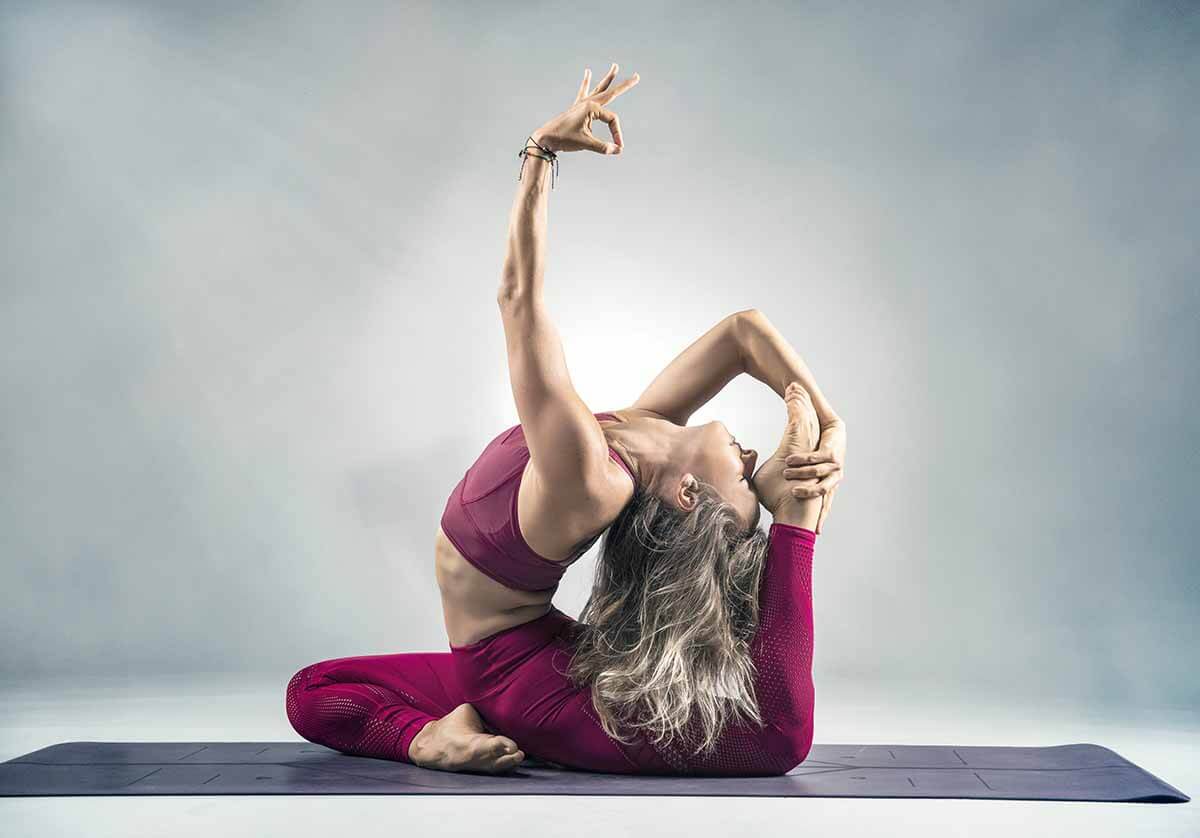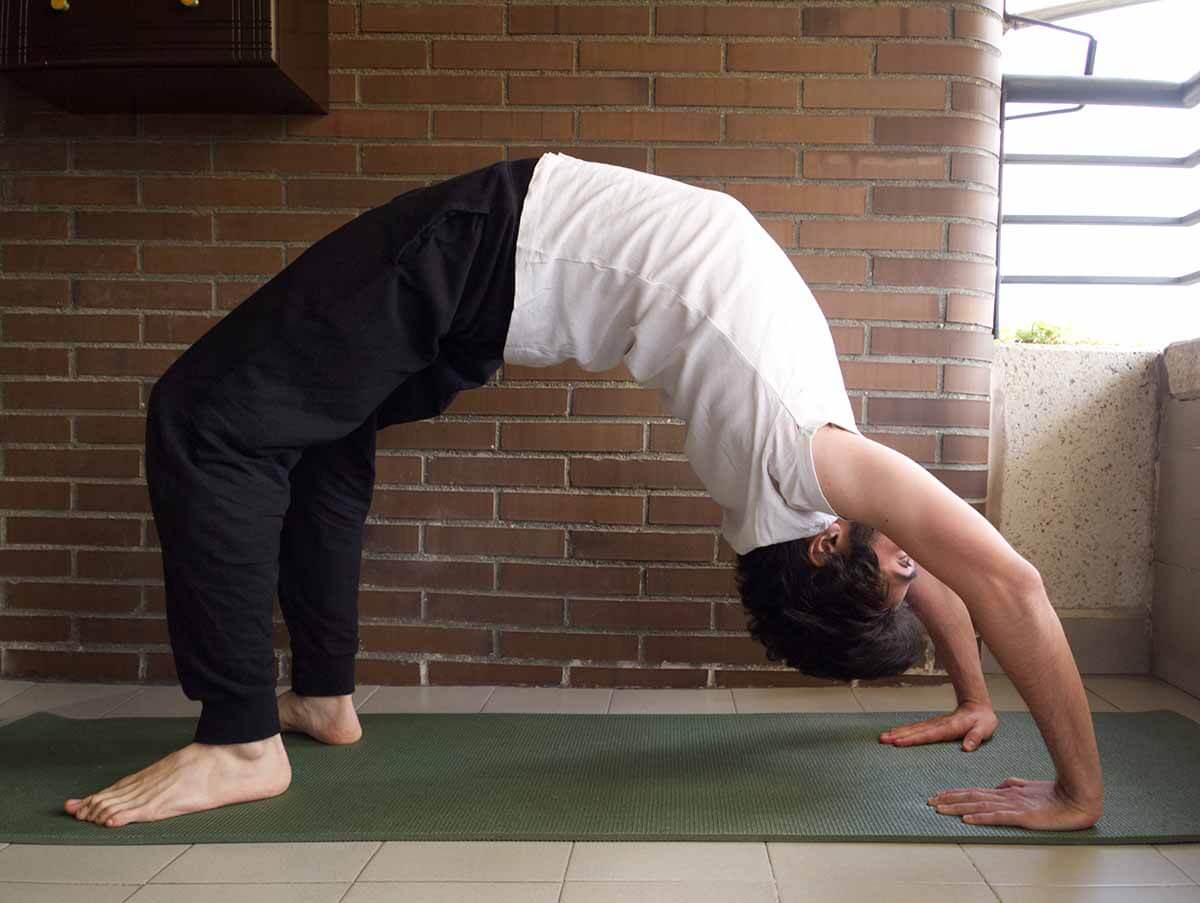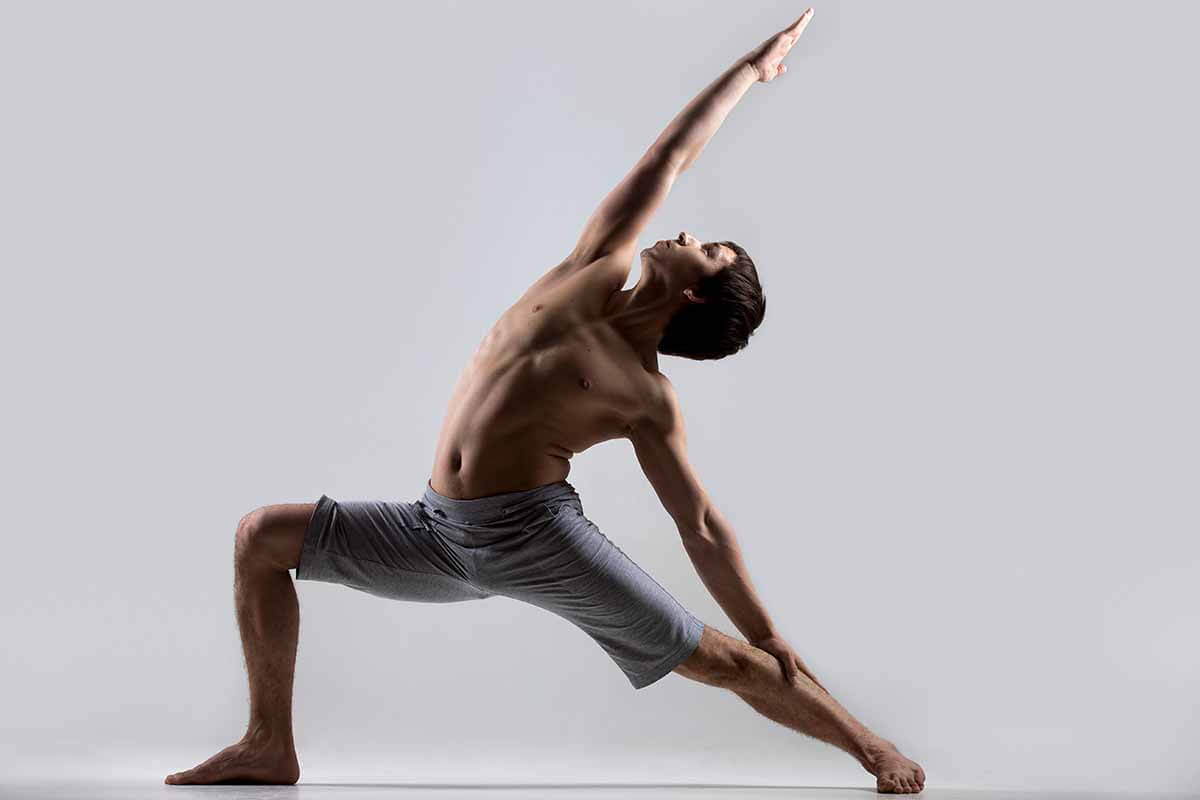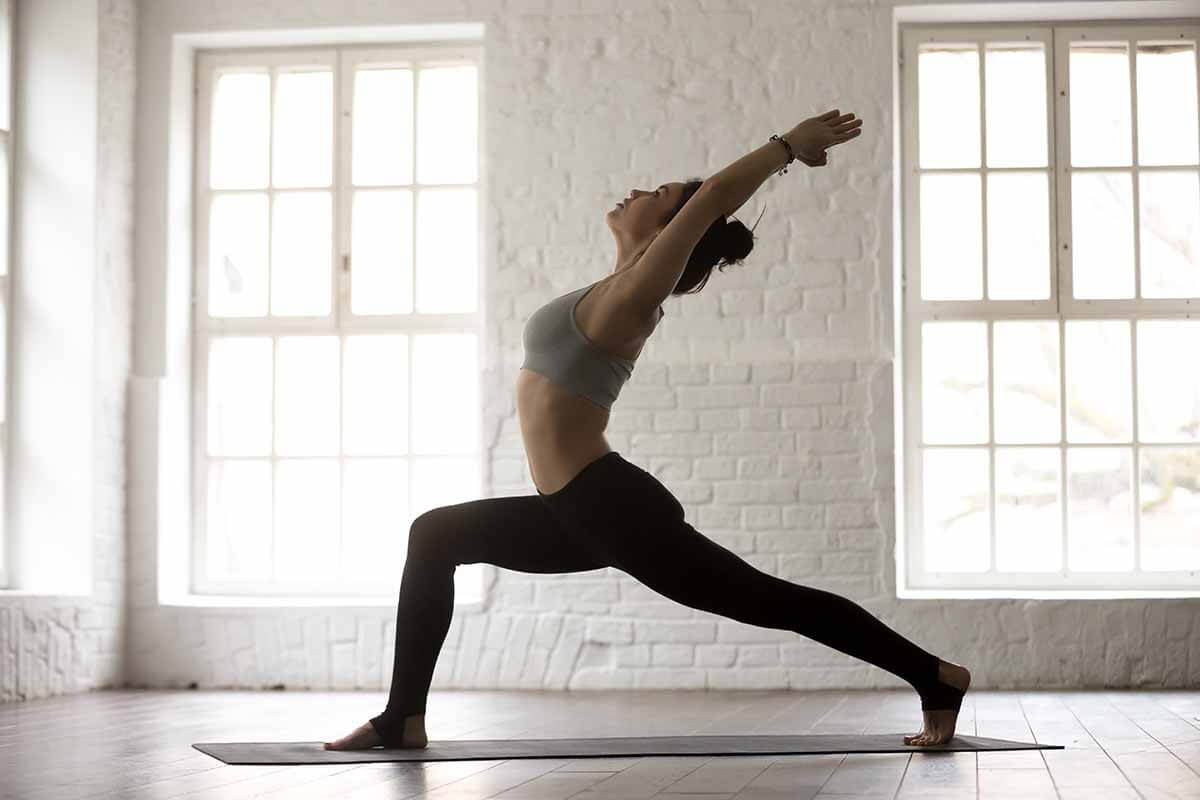
racticing yoga can be a bit daunting when it is in front of a class of yogis, and you're still learning the basics. Creating an at-home practice can be the first step to gaining the confidence you desire to join a live class.
All yoga poses set the intention of learning proper form and technique while bringing breath in and out of the body. A home yoga practice: warrior one pose is a great place to start as warrior one teaches the basic foundations of form, breath, and quieting the mind.
If learning how to begin an at-home yoga practice is something you have wanted to start but didn’t know where to begin, here is an in-depth look into practicing the basics of a warrior one pose.
Article Topics
What Is a Warrior 1 Pose In Yoga?
A warrior one pose is a standing variation in yoga that incorporates stability, strength, and focus for gaining strength in the legs, back, and core.
Warrior one pose is meant to allow the participant to use the breath in order to mentally focus on opening the hips, lengthening the core, rolling shoulders back, and lifting the heart towards the sky.
It is a powerfully dynamic posture whose intention is to create long lines in the body for toning all muscles and building on concentration to persevere during a challenging asana.
Warrior one pose is often used in the following classes:
- Power Yoga
- YogaHot
- Yoga
- Bikram Yoga
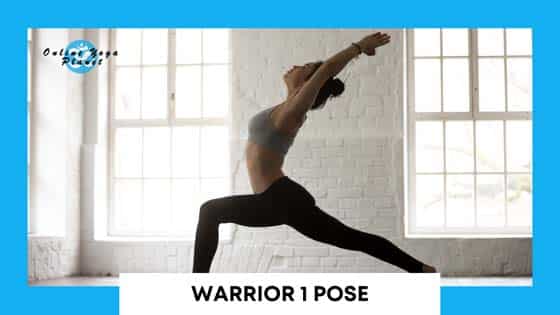
What Is the Sanskrit For Warrior 1 Pose?
The Sanskrit for warrior one pose Virabhadrāsana is derived from the warrior Virabhadra who is found on many cave paintings depicting this yoga stance while in battle with demons. This warrior pose is stated to symbolize the intention to overcome ego and arrogance.
Virabhadrasana, warrior one pose, is a lunging sequence found in yoga asanas representing strength, power, durability, and deep concentration.
This pose can be difficult as it is meant to challenge one’s ability to maintain the posture for a significant period of time and use the breath to gently move into a more relaxed, tension-free state of being.
What Is Warrior 1 Pose Good For?
The warrior one pose is good for working every muscle in the body in unison to build phenomenal core, back, chest, leg, and shoulder strength.
Warrior one aids in flexibility as the chest, shoulders, and neck lift up towards the sun while the lower body searches for the ground beneath your feet.
The hips are the main focus in the warrior pose; ensuring they are squared in the correct position and creating a firm foundation to maintain the stance is essential. The ankles, calves, and feet also play an important role for the warrior one pose as they work together with the quadriceps to create a long line of strength all the way from the toes to the fingertips.
The core and back are also primary components that allow the warrior pose to look powerful. Engaging both back and abdominal muscles are vital to keeping the participant in an upright position while the breath is what carries the participant’s focus to whatever areas of the body need to soften and settle into the strength of this asana.
What Are the Steps To Get Into Warrior 1 Pose?
While warrior one at first glance may appear simple, there are many steps to this posture that require proper form and technique. The breathwork necessary is also an important factor within this posture.
It is recommended participants watch warrior one be executed first and pay attention to:
- Cues for breath
- Sequence changes
- Variations
- High and low options are available depending on what level you’re at
- Understanding what parts of the body are being used for what
- Knowing the difference between pain and muscle burn
Listed below are the steps to get into the warrior one pose at home.
- Beginning in mountain pose, step either left or right foot back, your choice. Setting the feet hip-distance apart, point your toes out slightly. Stay in this position for a few moments to feel where you may have tightness and use your breath to release before moving ahead.
- Resting your hands on your hips, gently square your hips towards the front of your body, making sure to keep the upper body and shoulders facing forward. Look to the front of your mat; your entire body should be aligned with the edge and centered.
- The standing leg should be bent and parallel to the ground while the leg stepped back is slightly bent at the knee. Bring your weight forward into the heel and big toe of the standing leg to maintain balance and allow the quadricep to engage.
- The foot on the leg that is stepped back should be firmly pressed down using the toes while the arch stays lifted and the heel presses towards the back of the room. Engage the back leg using the heel; imagine a string coming out the foot’s arch, pulling it towards the wall while another string connects to the bottom of the standing foot, pulling it down into the Earth.
- Take a deep breath in and as you exhale, engage the core bringing the abs inward and up as you lengthen your spine and find softness in the rest of your upper body. Make sure not to clench the jaw or cheekbones; all of the work should be in the core, back, and legs. Focus on softening the face, neck, and chest using your breath.
- Take another deep inhale bring the arms extended over the head. As you exhale, roll your shoulders back and down, creating length in the body, and then try to bring the lower body deeper into the pose as you empty the lungs. Lift from your hips as your chest opens towards the sky and allow the collarbones to spread; this can help soften your upper body a little more.
- To create more length in the body, firm up the triceps and imagine a string connected to your fingertips pulling you towards the sun. Make sure to roll the back shoulder blades down and back to create space and lift in the upper back and, therefore, the chest.
- Eye gaze can be forward or lifted as long as the neck is relaxed and no pain is felt. If you choose to look up, make sure the chin is tucked, and the neck isn’t extended back. The head, neck, and spine should always stay aligned.
- Remain in this pose for at least five breath sequences. On the inhale is where you bring nourishing energy into the body and the exhale is to bring a deeper strength.
- As you inhale slightly, lift the body up out of the pose and, with the exhale, attempt to strengthen and lower into posture a litter deeper. You may need to do this often if you feel the burning sensation is too much to handle. Just keep using the breath to find softness and be patient; it takes time.
- To release yourself from this pose, bring the arms down and place your hands on your bent thigh. Inhale as you step the back leg in and bring the legs together slightly bent, exhale to rise back to mountain pose slowly.
- Shake out the arms and legs and continue the sequence. As the body warms up, you should be able to get deeper into the pose and create more length in the spine.
What Is the Variation Of The Warrior 1 Pose In Yoga?
There are several variations within the warrior one pose, including arm/hand, chest, and leg placements.
- The first variation is placing the hands in a prayer pose, bringing the thumbs into the heart chakra, and rolling the shoulders down and back.
- You could also clasp the hands behind the back, bringing the palms firmly together and reaching the knuckles towards the ground. Here you want to bring the back shoulder blades together as the chest stays lifted.
- For a lower variation, place one hand on the thigh as the opposite arm reaches towards the sky.
- A higher variation would be to bring the upper body to the inside of the bent leg, resting the shoulder against the thigh with your arms clasped behind you and lifted straight towards the sun.
- A lower variation of leg placement would be to set the knee of the leg stepping back on the floor into a low lunge.
- You could also bend the back leg into a bent knee lunge instead of extending the leg fully if you are experiencing pain or discomfort.
There are also several variations within this pose to accommodate pregnancy, back, knee, and neck injuries. The warrior one pose can be modified for all yoga levels to ensure the safety and well-being of all those who practice.
It is essential to listen to your body and identify the difference between pain and the muscles engaging, causing a slight burning sensation. If you ever feel pain, slowly and gently come out of the posture and give your body time to adjust
3 Benefits of Warrior 1 Pose In Yoga
Let’s break down the incredible benefits warrior one pose can bring to your mind, body, and inner well-being.
1. Improves Posture
One of the benefits of practicing the warrior one pose is that it can improve your posture and strengthen your balance. Warrior one consistently encourages you to lengthen the spine and engage the core and back; doing so tightens the muscles surrounding the spine, which are essential for balance.
2. Helps with Breathing
Often participants have a habit of holding their breath, whereas warrior one continuously reminds them to breathe in and out throughout the sequence. The warrior one pose sets the intentions to use the breath when coming in and out of poses in order to energize, restore balance, gain focus, and increase respiration in the body. Another benefit of warrior one pose with the breath is it allows participants to consciously focus on their breathing to slow down and create a steady pace.
3. Develops Other Poses
Working the warrior one pose also helps to improve other standing poses and variations as it strengths hip and quadriceps muscles. Warrior one pose can eventually grow into warrior two and three with proper form and technique.
Final Thoughts on Warrior 1 Pose In Yoga
The warrior one pose is a great transitional posture into learning more asanas within yoga. It allows you to slowly and safely build on strength, flexibility, and balance as you continue your at-home practice and eventually join a lice class.
Here’s an article explaining chair pose at home, you might want to check.


